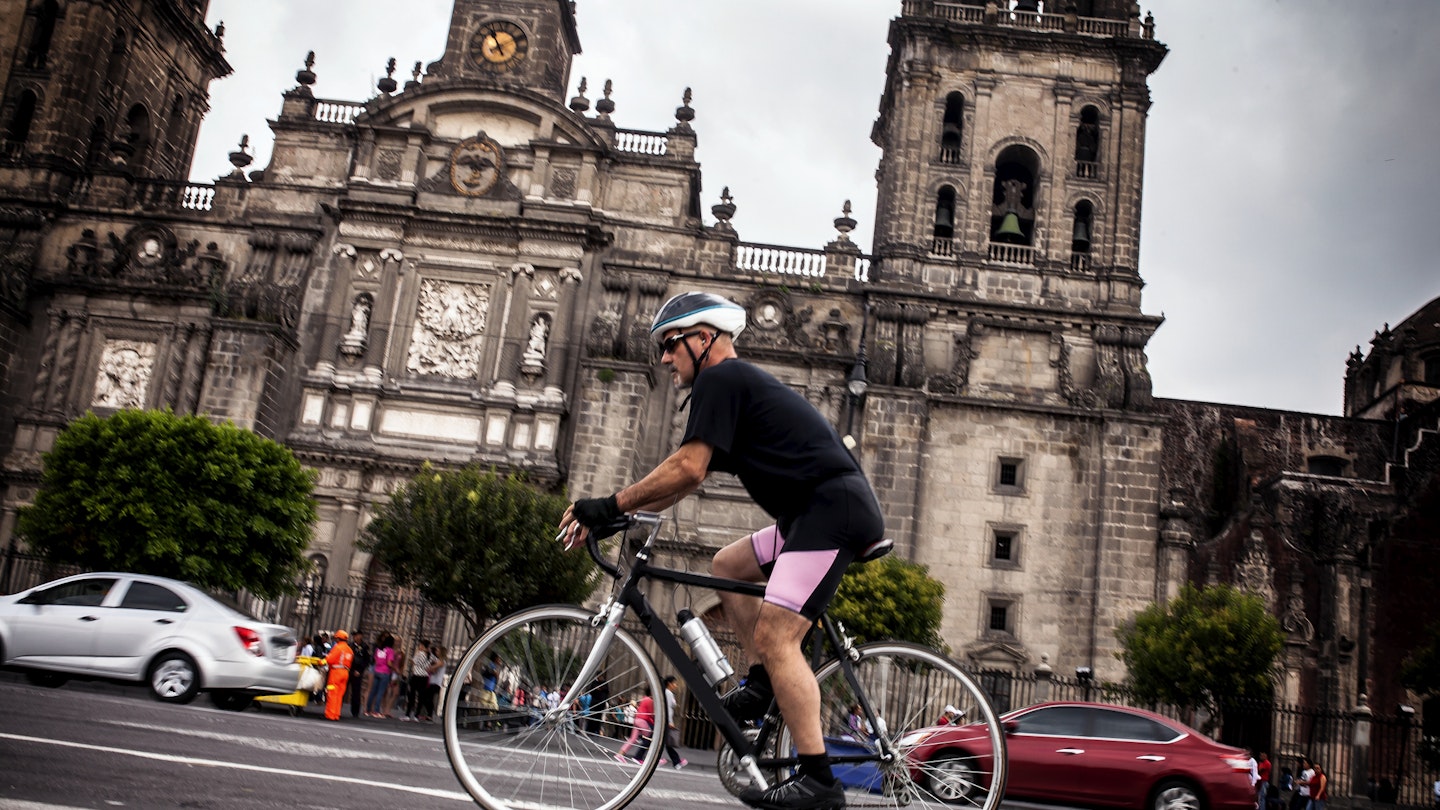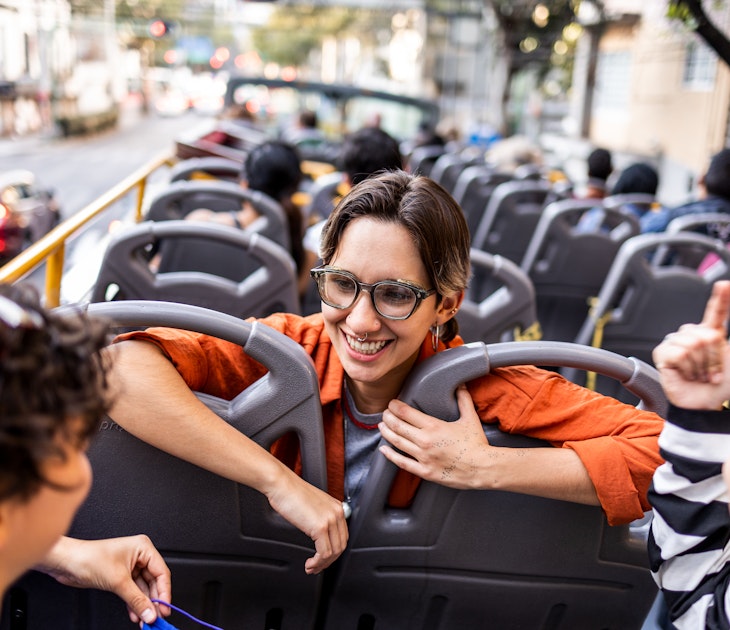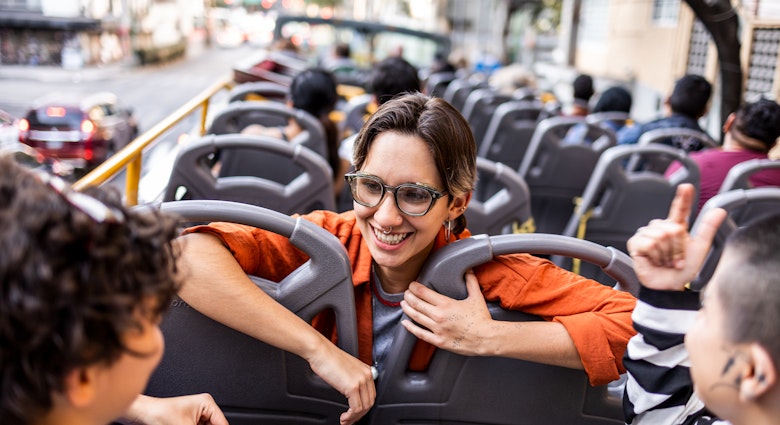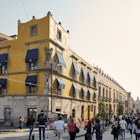Mexico City is one of the most culturally jam-packed cities in the world. It's also one of the largest and most heavily populated, stretching around 50km across and filled home to more than 20 million people.
Knowing how to get around the Mexican capital will help you get more out of your time in North America’s biggest city. Here are some tips for doing it as efficiently as possible.
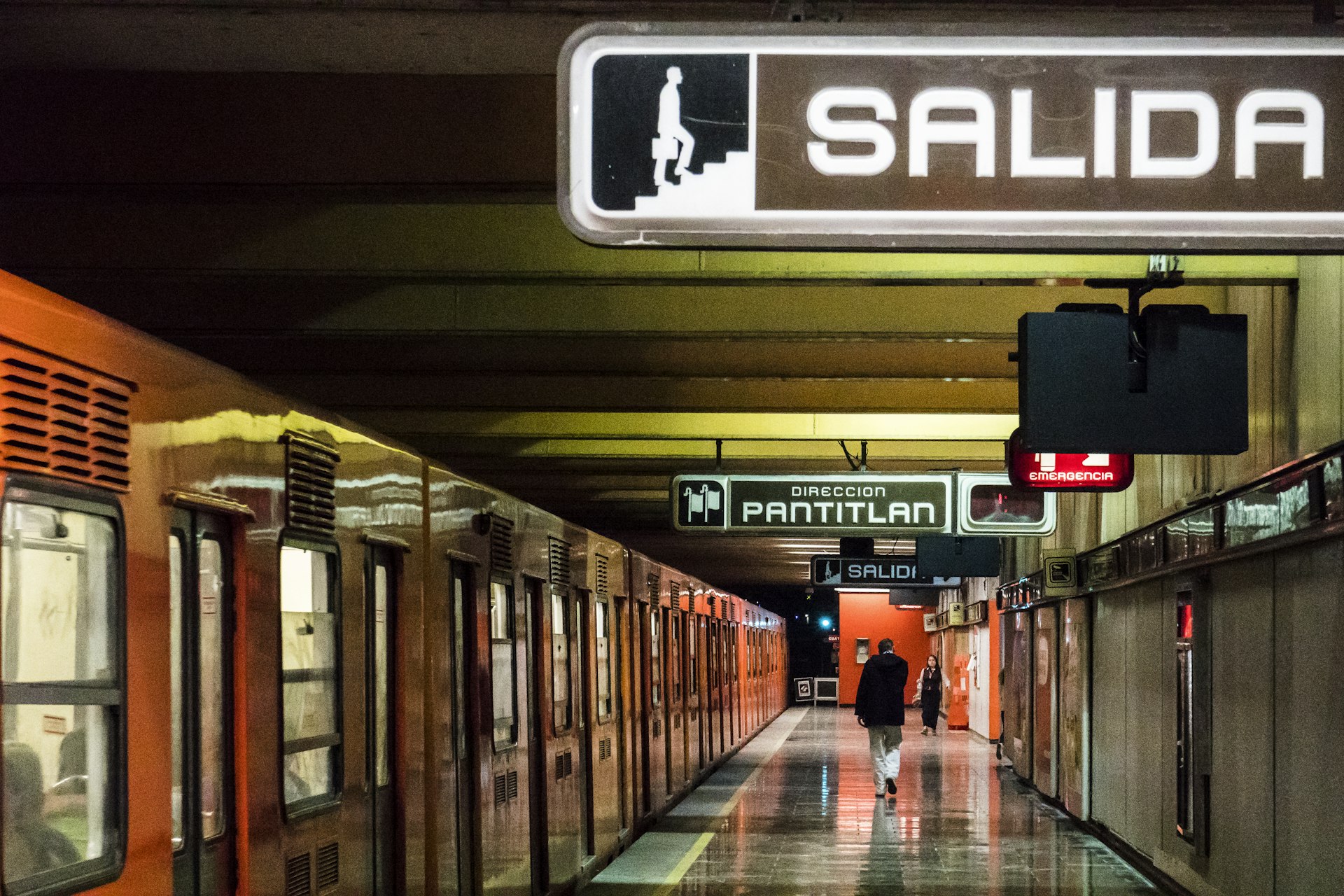
The subway is cheap, popular and an efficient way to get around
Mexico City’s subway is one of the cheapest and most popular ways to get around. With 12 lines and 195 stations, an estimated 5.5 million people travel on it each weekday – and during peak times (7–9:30 am and 5–7:30 pm) it can certainly feel like it.
More than just a way to get from A to B, the subway stations in Mexico City sometimes have things to do. Hidalgo and Bellas Artes stations have murals and art galleries with exhibitions; there’s a cinema at Zapata, and Pino Suárez has an ancient Aztec temple as part of the station.
Tips for taking the subway: Due to crowding, passengers are prohibited from carrying large travelers’ backpacks or suitcases. The first three carriages of the metro are reserved exclusively for women and children.

You won’t need a car, especially during rush hour
Ask anyone living in Mexico City about getting around and they will be quick to complain about grid-locked traffic.
Car rental is not recommended. The city is one of the most congested in the world, with drivers spending an average of 132 hours stuck in traffic in 2022 alone. The last thing you want to do on your trip is waste time sitting in a bottleneck, so avoid traveling by car or taxi in the mid-morning, mid-afternoon and early-evening rushes.
Take taxis at night
Sometimes you might want the comfort of a cab, especially at night. Flag down one of the unmistakable white-and-pink official taxis or use a ride-hailing app like Uber, Cabify, or DiDi to get around.
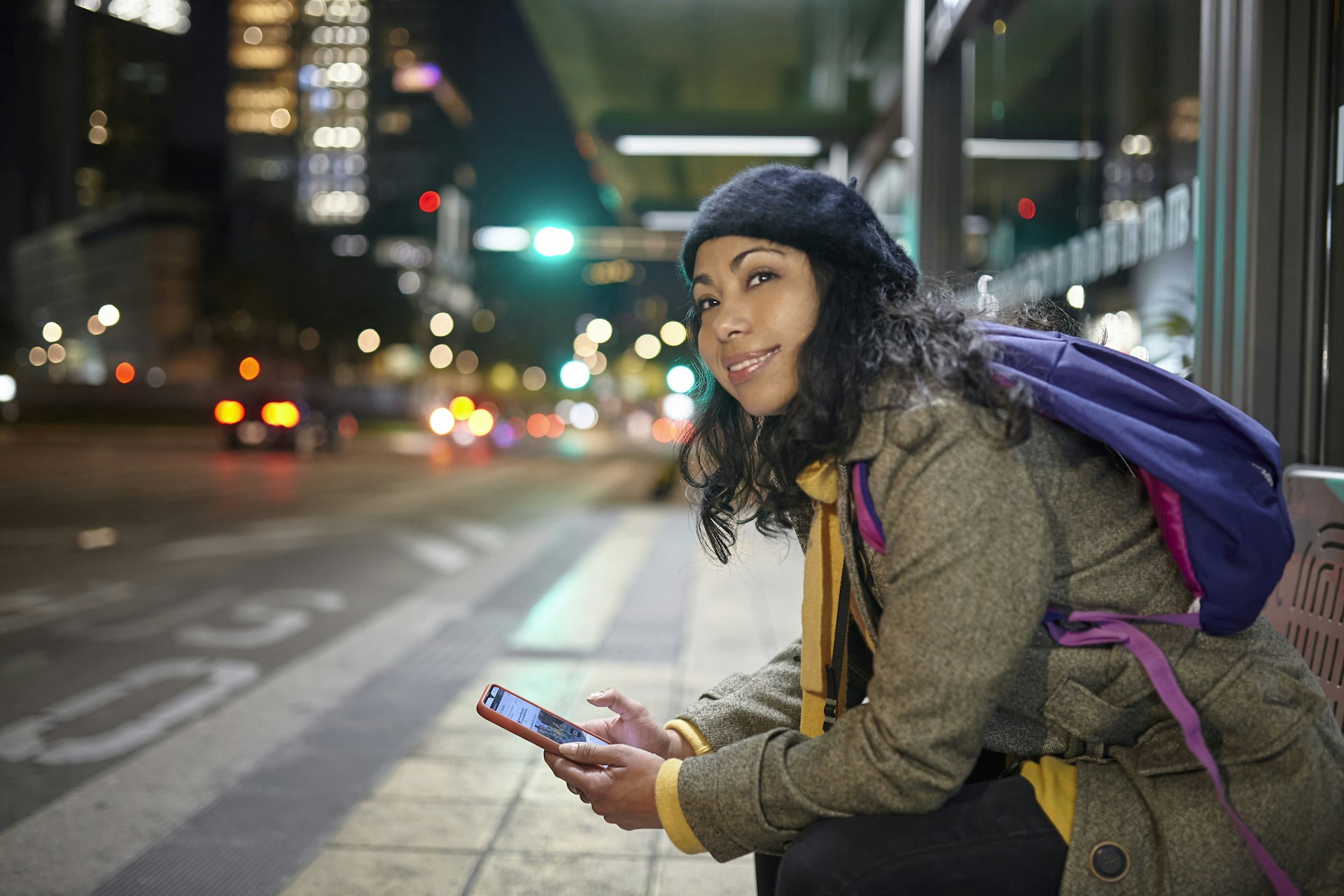
With dedicated lanes, the bus is quick and affordable
Mexico City has a highly developed bus network. Thousands of buses and peseros operate from around 5am till 10pm daily, depending on the route.
Electric trolleybuses (trolebús) generally run until 11:30 pm. Only a few routes run all night, notably those along Paseo de la Reforma. Here are the different types of busses:
Pesero
Peseros (also called microbúses or combis) are gray-and-green minibusses operated by private firms. They follow fixed routes, often starting or ending at metro stations, and will stop at virtually any street corner. Route information is randomly displayed on cards attached to the windshield.
Fares are M$5 for trips of up to 3 miles (5km), and M$5.50 for 3 to 7 miles (5-12km). Add 20% to all fares between 11 pm and 6 am. Privately run green-and-yellow buses charge M$6 and M$7 for the same distances. A useful resource for route planning with the confusing number of peseros is the ViaDF website.
Metrobús
The metrobús is a wheelchair-accessible long bus that stops at metro-style stations in the middle of the street, spaced at three- to four-block intervals. Access is by prepaid smart card, issued by machines for M$10 at the entrance to the platforms, and rides cost M$6.
The rechargeable cards, which can also be used for the metro, are placed on a sensor device for entry. During crowded peak hours, the metrobús is a favorite for pickpockets. The front of the bus is for women and children only, marked out with pink seating. Most metrobús lines run from 5 am to midnight.
Top tip for the metrobús: Línea 7 is a red double-decker that rides along Paseo de la Reforma from Plaza Garibaldi, passing key sights like Monumento a la Revolución, Zona Rosa and Reforma, El Ángel, Bosque de Chapultepec, Castillo de Chapultepec, Museo Tamayo and Museo de Antropología, terminating a stop after Auditorio Nacional.
Closed on Sundays 6:30 am to 2 pm between Chapultepec and Auditorio (including Antropología), as the avenue becomes a bicycle-only zone for the Paseo Dominical.
Trolebús
Municipally operated trolebúses (trolleybuses) and full-sized cream-and-orange buses (labeled ‘RTP’) only pick up at bus stops. Fares are M$2 (M$4 for the express) regardless of distance traveled and they only accept preloaded travel cards (as used on the metro and metrobús), no cash.
Trolleybuses follow a number of the key ejes (priority roads) throughout the rest of the city. They generally run until 11:30 pm. Route maps are on the trolleybus website.
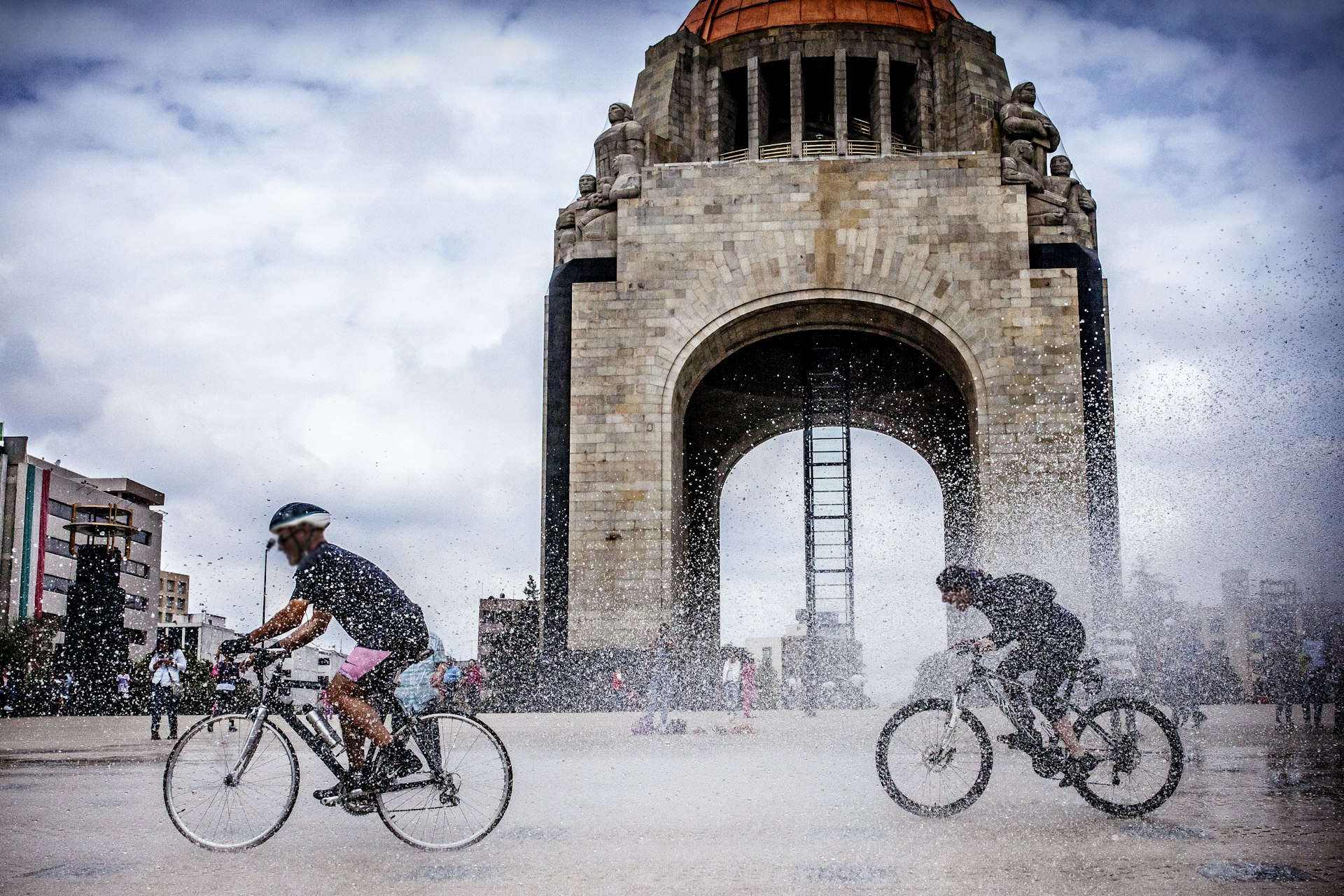
Try cycling on a Sunday
Bicycles can be a viable way to get around town and are often preferable to overcrowded, recklessly driven buses. Although careless drivers and potholes can make Mexico City cycling an extreme sport, if you stay alert and keep off the major thoroughfares, it’s manageable. The city government has encouraged bicycle use, with more bicycle-only lanes, and it’s definitely catching on.
Each Sunday (save the last Sunday of the month) the Muévete en Bici program transforms a number of major streets, such as Paseo de la Reforma, into a 57km car-free route for thousands of cyclists, dog walkers and rollerbladers to roam. Closed off to all motorized traffic from 8 am to 2 pm, it’s a great way to take in the city’s main sites.
Use the public bicycle hire system Ecobici to grab a bike from one of the 503 stations distributed across 71 neighborhoods. You will need to register online or in the Ecobici app by linking your Integrated Mobility Card and then purchase a plan for one, three or seven days (M$118; M$234; M$391 respectively for unlimited 45-minute rides. Use the app’s map to locate your nearest bike dock.
Float over the city in a cable car
In 2012, the new Cablebús system opened with two lines. The first goes from Indios Verdes to the northern neighborhoods of Cuautepec and Tlalpexco. It has halved transport time into the city center for residents and attracted tourists to this outlying area.
The second line connects the southeastern zones of Constitución de 1917 and Santa Marta. At more than 10km in length, it’s the longest public cable car line in Latin America. For M$7 you can glide in a gondola 100 feet above the traffic-laden streets whilst taking in incredible sweeping views of valleys and volcanoes.
Accessible transportation in Mexico City
Getting around Mexico City can be quite an undertaking for anyone, let alone for the more than 500,000 residents who live with a disability. The subway, for example, has notoriously limited facilities.
The most accessible public transport system by far is the Metrobús, which has priority boarding areas, elevators and ramps across almost all stations.
Many of the buses are level with the platforms to allow for easy boarding and have preferential seating and spaces for wheelchairs.
Another accessible way around the city is with Turibús, the bus tour service that offers fun and fuss-free trips around the Centro Histórico, Polanco and Chapultepec Park.
All buses have fold-down ramps and at least two reserved spaces for wheelchair users. The weekly Sunday cycle route is also a very inclusive and accessible experience for all.
Transport passes
Given the perpetual traffic issues in Mexico City, making the public transport system more appealing has become a key priority for officials.
The prepaid Tarjeta de Movilidad Integrada (Integrated Mobility Card) was introduced in 2019 allowing travelers to travel on trains, buses, cable cars and bikes using a single card.
Purchase the card at a ticket office or machine in any metro or Metrobús station for M$15 and top up as you go.

